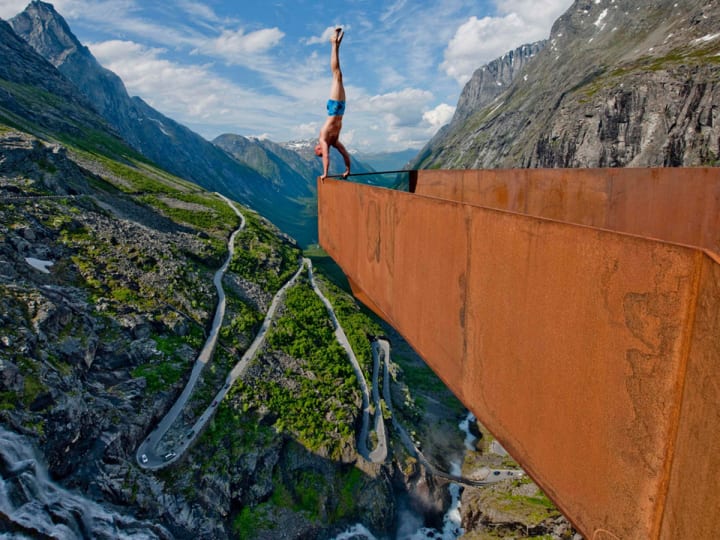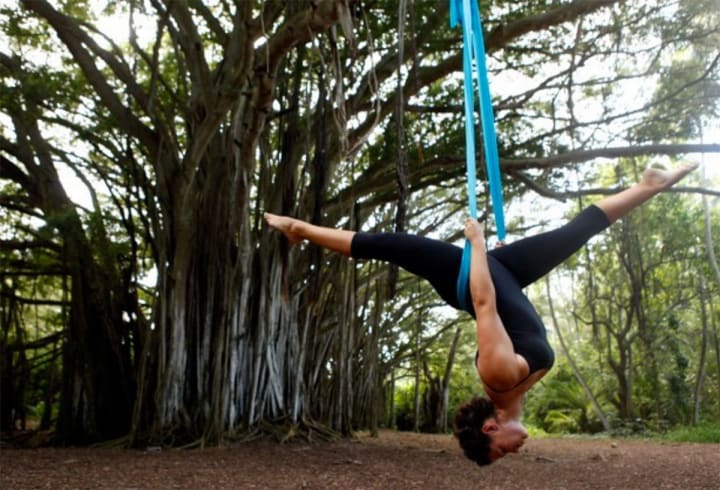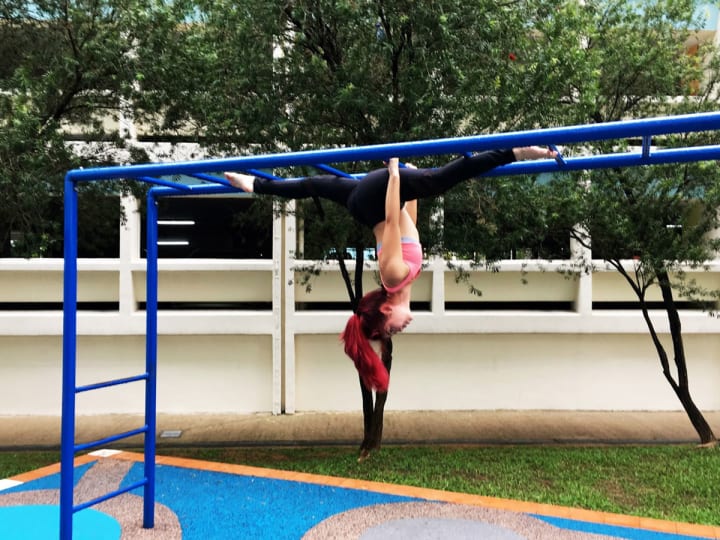Intense Forms of Extreme Yoga
Intense forms of extreme yoga take the normally grounded practice to new heights.

Yoga is a physical, mental, and spiritual practice that is designed to better the body and mind. There are many different forms of yoga. The most popular schools of yoga are hatha yoga, jnana yoga, hot yoga, and bhakti yoga. Each form is designed to link the mind and body through various poses. Each form of yoga presents its own health benefits. More rigorous forms, such as hot yoga, raise your heart rate and have cardiac benefits. Slower forms of yoga, such as yin yoga, can greatly increase flexibility.
Yoga increases the sex drive, and can be utilized during tantric sex to add some excitement to bedroom routines. It also fights back pain, improves sleep, and tones muscles. Beyond the traditional and better-known schools of yoga are several more intense forms that only the daring practice. The following ten yogis have taken yoga practice to the extreme.
Stunt Bike Yoga

Image via Snappy Trends
Gugulotu Lachiram Naik, a professional stunt biker, first became inspired to create his own stunts when he saw the sport on television. He practiced for some time until he eventually decided to create his own unique stunt biking routine by combining his love of motorbiking with his love for yoga. “I saw people performing dangerous stunts on national television” Lachiram told interviewers at Barcroft Media. “I thought if they can do it why can’t I, so I started practicing yoga on my bike.” Although he admits that performing the stunts can be scary, he feels happy while doing it. He doesn't plan on stopping anytime soon, either. “I completely love doing stunts on my bike. I will continue to do so for the next 15 years.” Rather than using the traditional yoga pants, Gugulotu appears to sport simply jeans and a t-shirt. Miraculously, he has not been injured thus far.
Cliff Yoga

Image via Tumblr
Extreme artist Eskil Ronningsbakken travels the world to perform balancing acts over lethal drops such as this fjord. Ronningsbakken practices extensively for each act uses yoga, meditation, and breathing techniques to stay focused on his feats. Other impressive feats performed by Ronningsbakken include tightrope walking between two hot air balloons while they flew and doing a handstand on a pile of chairs that had been balanced on a rock wedged in the crevice of two 3,500 foot tall cliffs. He is currently creating a documentary to be aired in Scandinavia, which has required him to re-perform his feats dozens of times in order to allow the film crew to get enough shots.
Nail Bed Yoga

The nail bed is named Shakti, which means energy, power, creativity and compassion-all things that utilizing it are supposed to evoke. The bed of nails has been used for thousands of years for healing the body and relieving physical, mental, and emotional problems to heighten consciousness. The practice of using a nail bed to heal originated in Indian mysticism. Indian yogis have used this implement to attain perfection of the mind and body.
However, yoga over a bed of nails can be dangerous if you aren't properly balanced and centered both physically and mentally. Contrary to popular belief, the bed is not used as a demonstration of resistance to pain, but as a way to test and strengthen balance and the mind-body connection. It is unknown when exactly the bed of nails was first used, but Chinese scriptures dating back 4,000 years reference the use of nail treatments to balance the body and mind.
Today, rather than running the risk of using actual nails, many use acupressure yoga mats instead. The "nails" on these mats are rounded to avoid injuring the user. The prongs massage and stimulate the body the same way an actual nail bed with without the danger of piercing the skin. The pressure of the nails encourages the body to release endorphins and oxytocin, encouraging happiness, bonding, and calmness. It is even thought to help the body rid itself of toxins
Skyscraper Yoga

Image via Youtube
British daredevil Scott performs yoga poses along a ledge atop of a building, balancing on both hands while leaning precariously over the edge. Young uses no safety net or harness while hand standing atop this 40-story Shanghai building. Even more unique than his balancing feats are his method of filming. Young films his high-rise yoga sessions with a camera that is built into his shoe.
Breakdance Yoga

Image via Youtube
At their core, yoga and breakdancing are both about flexibility, balance, and focus. A performance like Arthur Cadre's to "Sail" by Awolnation is mesmerizing to watch, and using yoga as a form of preparation for breakdancing is not uncommon. Breakdancer Jose Ruiz, who competed on So You Think You Can Dance in 2010, practices yoga to better his breakdancing skills. In an interview with YogaDork, Ruiz states, “I think it’s really important to stay flexible, so every day I get up and practice yoga. Yoga poses, they target the same muscles I use in breaking. And it really clears my head." Anya Porter is a breakdancing yogi from New York City who has deemed this style Breakti (it was formerly known as Yoga Spanda).
Underwater Yoga

Image via B Tru Yoga
Underwater yoga was first brought to the public eye at Rutgers University in January of 2010. An underwater yoga class was scheduled in the University's recreation department. Underwater yoga can be practiced in shallow water where participants can surface for air and are regularly putting their heads above water during standing poses. It can also be practiced in deeper water using scuba equipment. It is more difficult to strike poses underwater due to the resistance that the water provides, but poses are easier to hold because the water provides support to limbs. Underwater yoga also works on lung capacity more than other forms of yoga do.
Aerial Yoga

Image via Live Swell
Aerial yoga, or anti-gravity yoga, uses a fabric hammock or yoga swing to help students achieve traditional yoga positions while suspended from the ceiling. Aerial yoga classes are offered for a variety of fitness levels, but it is more difficult than traditional forms of yoga. This form of yoga originated in New York but is now practiced in several countries. Yoga hammocks are designed especially for aerial yoga. They can support up to 300 kilos of weight and consist of support chains, a webbing strap, a silk hammock and carabiners. Aerial yoga decompresses the spine more thoroughly than other schools of yoga due to positions that allow participants to hang upside down.
Exercise Bar Yoga

Image via Minicolee
Practicing yoga on an exercise bar, particularly one so far from the ground, greatly increases the muscle building benefits of yoga. Many dancers use exercise bars to supplement their workout routine in order to elongate and reshape their muscles. Keeping your body hanging from the bar also increases the aerobic benefits that you reap from yoga and tests your balance. This form of yoga requires a particularly intense mind-body connection.
About the Creator
Mackenzie Lu
Namaste. Active yogi and life enthusiast. It has become her mission to spread the benefits of having the mind, body, and soul in tune with one another.






Comments
There are no comments for this story
Be the first to respond and start the conversation.